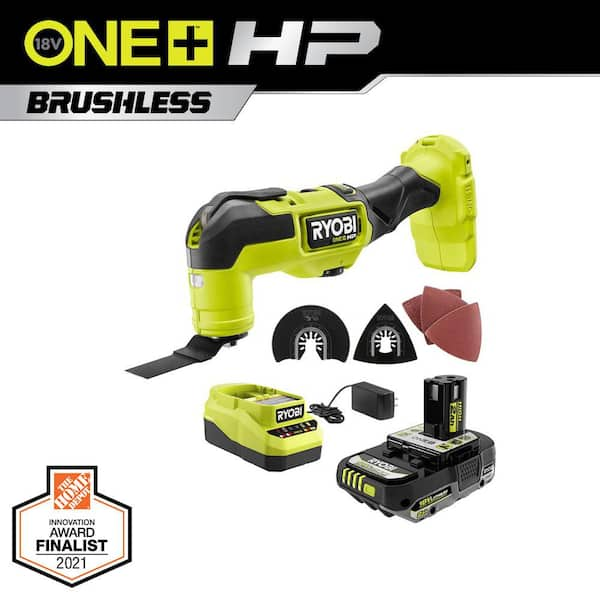Screws on tires can improve traction but must be checked regularly for safety. Driving in challenging road conditions requires tires with optimal traction for safety and performance.
One method to enhance tire grip is by using screws in the tread. These screws provide additional traction on icy or snowy surfaces, preventing slippage and improving control of the vehicle. However, it’s essential to ensure proper installation and maintenance of screws on tires to prevent damage to the tire or potential safety hazards.
Regular inspection and replacement of any worn or missing screws are crucial for safe driving in adverse weather conditions. By understanding the benefits and proper care of screws on tires, drivers can enhance their vehicle’s performance and safety on slippery roads.

Credit: www.homedepot.com
Types Of Screws For Tires
Screws on tires play a crucial role in providing traction and grip, especially in icy or snowy conditions. There are different types of screws used for tires, each serving a specific purpose and suited for various road conditions.
Standard Vs. Performance Screws
Standard screws are typically used for everyday driving in moderate weather conditions. On the other hand, performance screws are designed for enhanced traction and grip, ideal for extreme weather and off-road driving.
Spike Vs. Studs
- Spike screws: Have sharper points for penetrating ice and providing superior traction.
- Studs: Have a wider surface area and are more versatile, suitable for various terrains.
“`
Creating a section like this for a blog post on tire screws would help readers understand the different types available and their specific applications effectively. The use of HTML formatting ensures clear structuring and presentation on WordPress, making it SEO-friendly and engaging for the audience.
Benefits Of Using Power Tools
When it comes to working on tires, using power tools can offer numerous benefits that enhance efficiency and precision installation. Power tools help in getting the job done quickly and accurately.
Enhanced Efficiency
Power tools significantly speed up the process of installing screws on tires, saving time.
Using power tools minimizes manual effort and fatigue, resulting in quicker completion.
Precision Installation
Power tools ensure screws are installed accurately and securely for optimal tire performance.
They provide consistent torque control, preventing over-tightening or under-tightening.
Choosing The Right Power Tool
When it comes to dealing with screws on tires, choosing the right power tool is essential. Whether you are a professional mechanic or a DIY enthusiast, having the appropriate tool can make a significant difference in the efficiency and quality of your work.
Impact Wrenches
Impact wrenches are powerful tools designed specifically for loosening or tightening screws and bolts. These tools utilize high-torque output to provide the necessary force to tackle stubborn screws on tires. With their ability to deliver quick bursts of torque, impact wrenches can easily handle the resistance often encountered when dealing with tires.
Cordless Drills
For more versatile applications, cordless drills can also be a suitable option for handling screws on tires. With the advancements in battery technology, modern cordless drills offer sufficient power and torque to handle various tasks. They provide the convenience of mobility and can be an excellent choice for tasks that require precision and control.

Credit: www.amazon.com
Tips For Proper Installation
Proper installation of screws on tires is essential for a safe and hassle-free driving experience. Whether you live in an area with heavy snowfall or frequently drive on icy roads, screws can provide the extra traction you need to stay in control. In this section, we will cover the necessary preparation steps and installation techniques to ensure the screws are properly installed on your tires.
Preparation Steps
Before you begin the installation process, it is important to prepare your tires to ensure optimal results. Follow these preparation steps to ensure a successful screw installation:
- Clean the tires thoroughly to remove any dirt, debris, or existing screws. This will allow the new screws to penetrate the rubber more effectively.
- Inspect the tires for any damage or wear. Replace any damaged or worn-out tires to ensure the screws have a secure grip.
- Measure the tire tread depth using a tread depth gauge. Make sure the depth is sufficient to accommodate the screws without piercing through the tire.
- Mark the desired screw placement on the tire using a chalk or marker. This will help you maintain an even distribution of screws across the tire.
Installation Techniques
Once you have prepared your tires, it’s time to move on to the installation process. Follow these techniques to ensure the screws are properly installed:
- Start by drilling pilot holes into each marked spot on the tire. Use a drill bit that matches the size of the screws you are using.
- Insert the screws into the pilot holes. Ensure they are inserted firmly but not excessively tight, as this can damage the tire.
- Use a wrench or screwdriver to tighten the screws. Make sure they are securely fastened without over-tightening, as this can cause the tire to puncture.
- Repeat the process for each marked spot on the tire, evenly distributing the screws for maximum traction.
Remember to periodically check the screws for any signs of loosening or damage. If you notice any issues, tighten or replace the screws as necessary. Proper installation and regular maintenance will ensure that your tires provide the grip you need when driving in challenging conditions.
Maintenance And Safety
Tire safety includes regular checks for loose or damaged screws on tires. Maintaining proper tire maintenance is crucial for safe driving and avoiding potential accidents. Inspect for any loose or missing screws to ensure the safety and performance of your tires.
Screws on tires play a crucial role in providing traction and stability to your vehicle, ensuring a safe and smooth journey. However, it is essential to regularly inspect and maintain them to maximize their efficiency and prevent any potential accidents or damages. This section will focus on the maintenance and safety aspects of screws on tires, providing you with valuable information to keep you and your passengers safe on the road.
Regular Inspections
Regular inspections of screws on tires are vital to identify any signs of wear and tear, damage, or misalignment. By inspecting your tires regularly, you can detect any issues early on and address them promptly, avoiding more significant problems down the line. Here are a few key areas to focus on during your inspections:
- Tread Depth: Ensure that the tread depth is within the recommended range for your specific tires. This is crucial for optimal traction and performance on different road surfaces.
- Screw Alignment: Check that the screws are properly aligned and evenly distributed across the tire surface. Misaligned or missing screws can lead to uneven wear and compromised safety.
- Screw Length: Verify that the screws are of the appropriate length, not too long or too short. Improper screw length can result in insufficient grip or potential damage to the tire.
- Damage or Corrosion: Inspect the screws for any signs of damage, such as bending or corrosion. Damaged screws can cause punctures or lead to the loss of traction.
Safety Precautions
While screws on tires can enhance your vehicle’s grip on icy or snowy roads, it is crucial to take certain safety precautions to ensure their optimum performance. Here are some essential safety measures to keep in mind:
- Appropriate Speed: Maintain a moderate speed when driving on tires with screws, especially in slippery conditions. Excessive speed can compromise the stability and control of your vehicle.
- Maintain Distance: Keep a safe distance from other vehicles to allow for sufficient braking distance. This is particularly important on slippery surfaces, as it takes longer to stop the vehicle.
- Sudden Movements: Avoid sudden acceleration, braking, or sharp turns, as these can cause loss of control and potentially lead to accidents.
- Repair or Replacement: If you notice any significant damage to the tires or screws, it is crucial to repair or replace them immediately. Delaying necessary repairs can increase the risk of accidents and further damage to your vehicle.
- Professional Installation: Always ensure that screws on tires are installed by a qualified professional who adheres to industry standards. Improper installation can compromise the effectiveness of screws and may void any warranties.
By conducting regular inspections and following essential safety precautions, you can maintain the performance and safety of screws on tires. These precautions ensure that your vehicle remains stable, provides optimal traction, and offers you peace of mind during your travels. Remember, prioritizing maintenance and safety is essential to keeping yourself and others safe on the road.

Credit: www.harborfreight.com
Frequently Asked Questions Of Screws On Tires
How Do Screws On Tires Affect Performance?
Screws on tires provide improved traction on icy or snowy surfaces, enhancing performance and reducing the risk of skidding or sliding. They increase grip and control, resulting in better braking and accelerating capabilities. This makes them beneficial for winter driving conditions or off-road adventures.
Are Screws On Tires Legal?
The legality of screws on tires varies by jurisdiction. Some areas permit their usage during winter months or in specific off-road situations. However, it’s important to check local laws and regulations to ensure compliance. Violation of these laws may result in fines or other penalties.
Can Screws On Tires Damage The Roads?
Screws on tires can potentially cause minor damage to road surfaces, particularly when used on asphalt pavements or concrete roads. Over time, they can create small holes or indents. However, this is generally considered minimal compared to the benefits they provide in terms of improved traction and safety.
Conclusion
Injuries and accidents caused by screws on tires can be easily prevented with regular maintenance. By checking tire pressure and tread, you can avoid costly repairs and ensure safety on the road. Stay proactive and mindful of your vehicle’s condition to stay ahead of potential problems.
Stay safe, stay informed.


